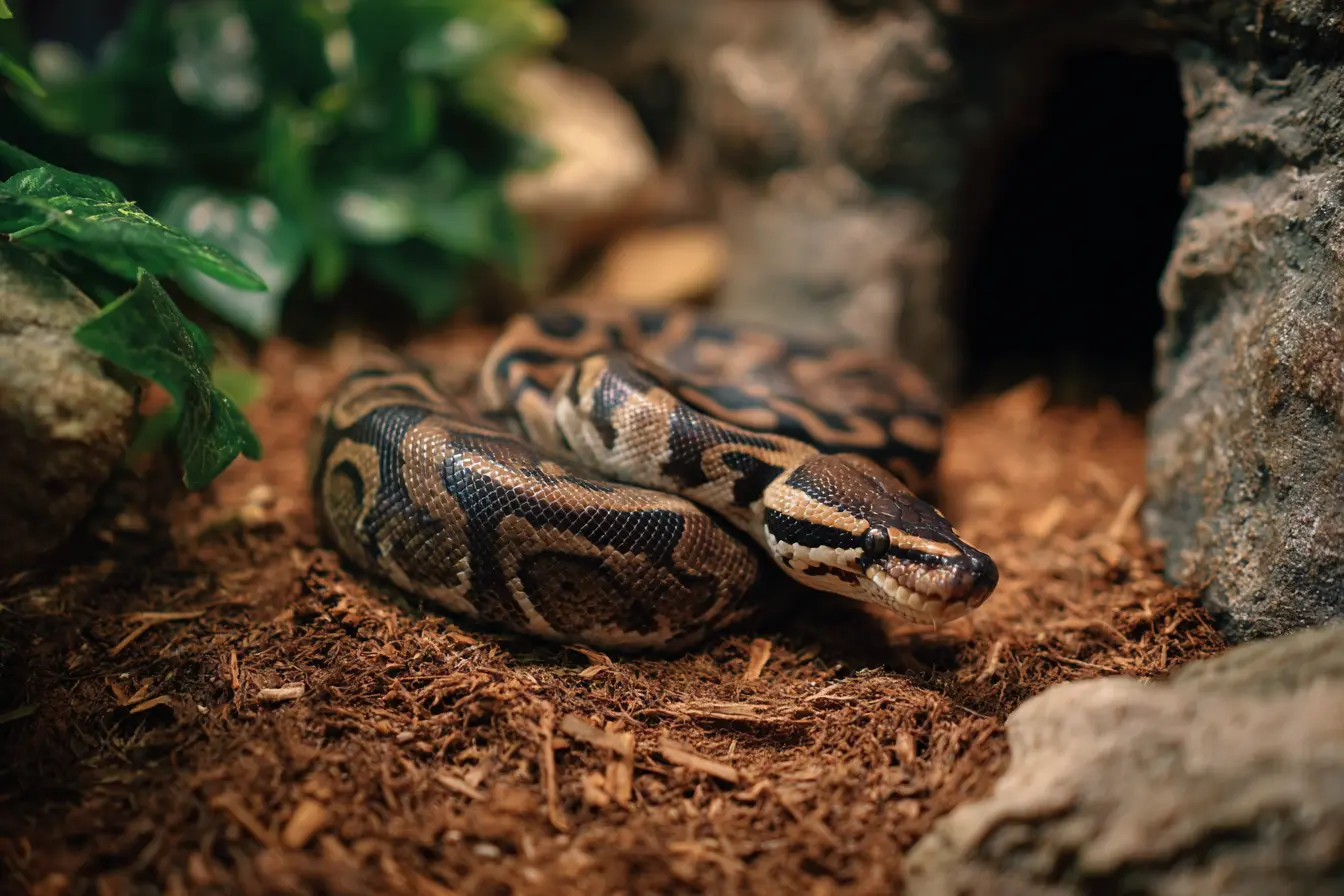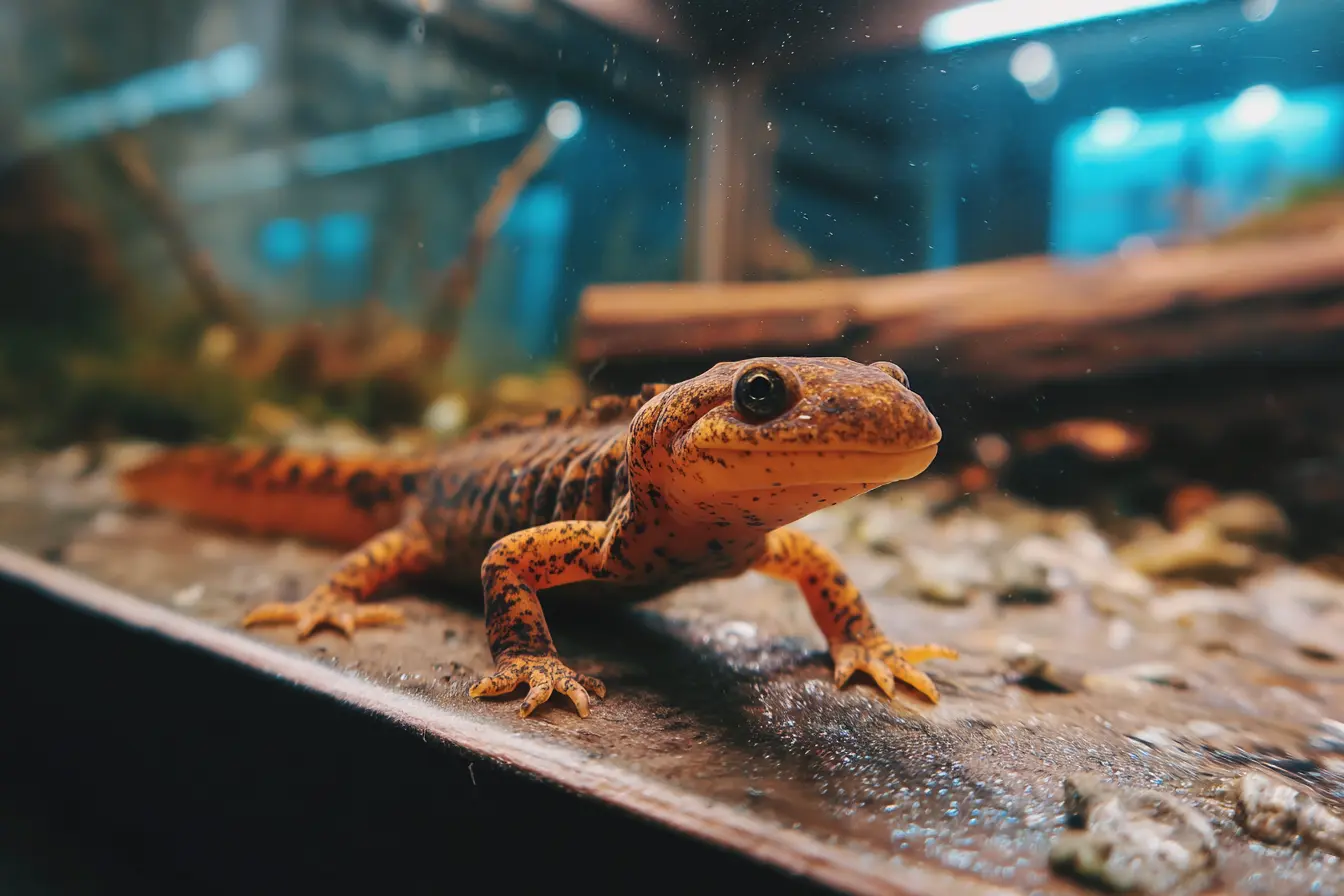
Common Ailments in Toads
Toads are hardy, adaptable amphibians often perceived as low-maintenance pets. However, like all animals, they are susceptible to a range of health issues, particularly if their basic needs are not properly met. Early detection and appropriate care are essential for ensuring a long, healthy life. This guide outlines the most common ailments in toads, their causes, symptoms, prevention, and treatment options.
Red Leg Syndrome
Cause:
Red Leg Syndrome is a bacterial infection, usually caused by pathogens like Aeromonas hydrophila. It commonly results from poor water or substrate hygiene, overcrowding, and stress.
Symptoms:
- Bright red or purplish discolouration on the legs, abdomen, or underside
- Skin ulcers or sores
- Lethargy
- Loss of appetite
- Rapid decline and possible death if untreated
Prevention:
- Maintain a clean enclosure with good substrate hygiene
- Avoid overcrowding
- Quarantine new arrivals before introducing them to existing toads
Treatment:
Immediate veterinary care is essential. Treatment involves systemic antibiotics and improving environmental conditions. Supportive care, such as hydration therapy, may also be necessary.
Fungal Infections
Cause:
Fungal infections are common in toads exposed to consistently damp and dirty environments. Skin injuries can also allow fungi to take hold, particularly Saprolegnia species.
Symptoms:
- Cotton-like white or grey patches on the skin
- Skin discolouration or sloughing
- Lethargy
- Decreased feeding
Prevention:
- Keep the enclosure clean and monitor humidity carefully
- Remove uneaten food promptly
- Treat injuries promptly to prevent secondary infections
Treatment:
Mild infections may respond to salt baths. Severe or widespread fungal infections require veterinary-prescribed antifungal medications and environmental sterilisation.
Parasites
Cause:
Parasites can be internal (e.g., nematodes, protozoa) or external (e.g., mites). They are often introduced through contaminated prey, substrate, or from other infected animals.
Symptoms:
- Visible worms or parasites in faeces
- Abnormal faeces (diarrhoea, undigested material)
- Weight loss despite eating
- Visible mites or ticks on the skin
- Lethargy and poor condition
Prevention:
- Feed captive-bred, parasite-free prey
- Quarantine all new toads
- Regularly clean the habitat
Treatment:
Diagnosis by a veterinarian through faecal analysis or skin examination is necessary. Specific antiparasitic medications will be prescribed based on the parasite identified.
Impaction
Cause:
Impaction occurs when a toad ingests substrate material such as gravel, soil, or inappropriate prey that cannot be digested.
Symptoms:
- Distended or hard abdomen
- Lethargy
- Loss of appetite
- Reduced faecal output or constipation
Prevention:
- Use safe, digestible substrate such as soil or coconut fibre
- Feed appropriately sized prey
- Supervise feeding to prevent ingestion of non-food items
Treatment:
Mild cases may resolve with hydration therapy and time. Severe cases require veterinary intervention and possibly surgery to remove the blockage.
Skin Shedding Problems (Dysecdysis)
Cause:
Improper humidity levels, poor nutrition, or underlying infections can result in abnormal or incomplete shedding.
Symptoms:
- Retained patches of old skin
- Rough, dry, or flaky skin
- Irritability or excessive rubbing behaviour
Prevention:
- Maintain correct humidity appropriate to the species
- Provide clean, moist hides and bathing opportunities
- Ensure a balanced diet rich in vitamins and minerals
Treatment:
Increase humidity levels and offer regular soaking opportunities. Gently remove retained shed if softened, but seek veterinary assistance if the condition persists.
Metabolic Bone Disease (MBD)
Cause:
MBD results from calcium deficiency, an improper calcium to phosphorus ratio, or insufficient vitamin D3. Though toads absorb some UVB naturally, captive individuals often require supplementation.
Symptoms:
- Deformed or soft bones
- Difficulty moving
- Weakness
- Skeletal abnormalities
- Swelling of the jaw or limbs
Prevention:
- Dust food with calcium and vitamin D3 supplements
- Provide UVB lighting if appropriate for the species
- Feed a balanced diet with varied prey items
Treatment:
Veterinary treatment involving calcium supplementation is necessary. Correcting diet and environmental factors is critical for long-term health.
Bloat (Dropsy)
Cause:
Bloat may result from bacterial infections, organ failure, or osmotic imbalances. It leads to fluid build-up inside the body.
Symptoms:
- Significant swelling of the body
- Floating abnormally (in aquatic species)
- Difficulty moving
- Lethargy
Prevention:
- Maintain excellent water and habitat quality
- Feed a proper, varied diet
- Minimise stress
Treatment:
Seek immediate veterinary care. Treatment typically involves draining excess fluids and addressing the underlying cause with antibiotics or other therapies.
Vitamin A Deficiency
Cause:
Vitamin A deficiency, sometimes known as "Short Tongue Syndrome," impairs mucus membrane function, affecting feeding and immune response.
Symptoms:
- Difficulty catching prey
- Swollen eyes or limbs
- Skin problems
- Lethargy
Prevention:
- Offer a varied diet including vitamin A-rich foods like gut-loaded insects
- Use appropriate vitamin supplements when needed
Treatment:
Veterinary-prescribed vitamin A supplementation is required, often administered via injection or oral drops.
General Preventative Care Tips
- Research the specific needs of your toad species thoroughly.
- Maintain correct temperatures, humidity, and habitat design.
- Clean the habitat regularly, removing waste and uneaten food.
- Provide a varied, gut-loaded prey diet dusted with supplements as needed.
- Test water quality regularly if your toad has access to aquatic areas.
- Quarantine all new animals for at least 30 days.
- Minimise handling and always use clean, wet hands when necessary.
- Monitor your toad daily for changes in behaviour, appearance, or appetite.
Conclusion
Though toads are often seen as robust amphibians, they are still vulnerable to a range of health problems if not properly cared for. Good husbandry, regular observation, and prompt veterinary intervention when needed are crucial for ensuring the health and longevity of your toad. By understanding common ailments and their prevention, you can create a safe, thriving environment for your amphibian companion.
Contents
Tags
Related Vets
Vets near you
Speciality vets
- Aquatics vet specialists
- Birds vet specialists
- Camelids vet specialists
- Cats vet specialists
- Cattle vet specialists
- Deer vet specialists
- Dogs vet specialists
- Equines vet specialists
- Exotic vet specialists
- Goats vet specialists
- Pigs vet specialists
- Poultry vet specialists
- Sheep vet specialists
- Small Mammals vet specialists
- Wild vet specialists










